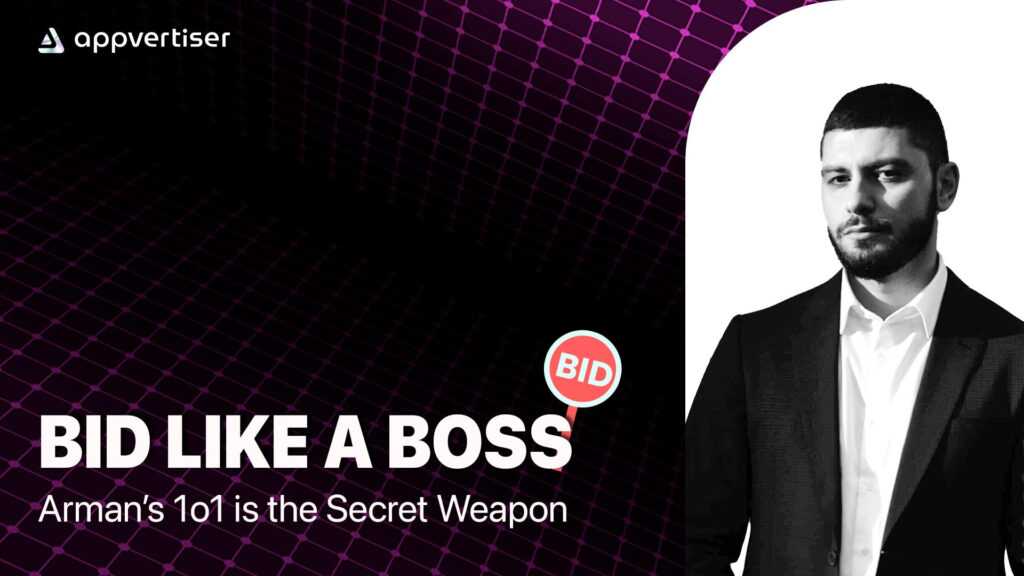
Bid Like a Boss!

Bidding Strategies that Boost KPIs
Hey there! Arman here, ready to dive into the world of bidding models. Think of this as your personal guide to maximizing your monetization potential while keeping users happy!
When it comes to ads, marketers rely on bidding models to determine which ads are displayed and how much they earn from them. Understanding these models is crucial for marketers to maximize their revenue and user experience.
So, you want to understand how these bidding models work and how to choose the right one for your site? Let’s break it down, shall we?
Header Bidding
Imagine an auction where multiple buyers compete simultaneously for an item. That’s the essence of Header Bidding. It’s an advanced technique where publishers send ad requests to several ad exchanges concurrently, before their ad server kicks in. This creates a real-time competition, often leading to higher bids and increased revenue for the publisher.
Here’s how it works:
- User Visits Page:
When a user visits a web page, the header bidding script (usually placed in the header of the page) is triggered.
- Bid Requests Sent
The script sends bid requests to multiple demand partners (ad exchanges, SSPs).
- Bids Returned
Each partner returns a bid within a specified timeout.
- Highest Bid Selected
The highest bid is selected and sent to the ad server.
- Ad Server Decision
The ad server compares the winning header bid with its own direct campaigns and decides which ad to display
Pros:
- Increased Revenue
More competition drives up the price, resulting in potentially higher eCPMs (effective cost per thousand impressions).
- Transparency
Marketers gain real-time insights into all bids, allowing for better decision-making.
- Improved Fill Rates
With more bidders competing for ad slots, the chances of filling all available space increase.
Cons:
- Complexity
Setting up and maintaining Header Bidding requires technical expertise.
- Latency:
The additional bid requests can add milliseconds to page load times.
- Timeout Issues
Slow responses from exchanges can lead to missed opportunities to display ads.
Curious about bidding models but feeling a little intimidated? We’ve got your back! Book a meeting with our team of experts (It’s free, so no excuses 😉)
Waterfall Bidding
Waterfall Bidding, also known as daisy-chaining, is a traditional approach resembling a waiting list. Here, ad impressions are offered to demand sources in a predetermined order, one after the other. If a higher-priority network fails to fill the slot, the request moves down the chain to the next network.
Here’s how it works:
- User Visits Page
An ad request is sent to the ad server.
- Sequential Requests
The server first offers the impression to the highest-priority network.
- Pass or Fill
If the network can’t fill the impression, it passes to the next network in the sequence.
- Continuing Down the Chain
This process continues down the chain until the impression is filled
Pros:
- Simplicity
Waterfall Bidding is easier to implement and manage compared to Header Bidding.
- Lower Latency
Sequential requests typically experience less lag than the real-time competition of Header Bidding.
- Established Method
This method is well-understood and widely used in the industry.
Cons:
- Lower Revenue Potential
The sequential nature means potentially missing out on higher bids from networks placed lower in the chain.
- Less Competition
With fewer networks bidding simultaneously, eCPMs might be lower overall.
- Inefficiency
If top networks frequently pass on requests, it can lead to wasted impressions.
Hybrid Models
Hybrid Models, as the name suggests, combine elements of both Header Bidding and Waterfall Bidding. They aim to capture the best of both worlds: the real-time competition for higher revenue and the structured approach for reliability.
Here’s how it works:
- Initial Header Bidding
Initial bids are collected through header bidding.
- Follow-up Waterfall
The highest bid from header bidding is then compared with the waterfall setup.
- Final Decision
The ad server makes the final decision on which ad to display, considering both header bidding results and the traditional waterfall sequence
Pros:
- Maximized Revenue
Leverages the competitive advantage of Header Bidding while maintaining the reliability of Waterfall Bidding.
- Flexibility
Allows publishers to tailor their approach, optimizing high-performing and low-performing ad slots differently.
- Balanced Load
Mitigates latency issues by distributing the load across both bidding models.
Cons:
- Complex Setup
Implementing and managing a Hybrid Model requires sophisticated technical knowledge.
- Potential Latency
While typically lower than pure Header Bidding, some latency issues might still occur.
- Resource Intensive
This approach demands more technical resources and ongoing monitoring.
Unsure which bidding model to choose? No problem! Contact our experts 👨💻
Choosing the Right Model
There’s no one-size-fits-all solution. Here’s a quick breakdown to help you decide:
- Header Bidding
Ideal for publishers seeking to maximize revenue through increased competition, but requires technical expertise and can affect page load times.
- Waterfall Bidding
A good option for those who prioritize simplicity and a well-established method, but might sacrifice some revenue potential.
- Hybrid Models



